A portable generator is a great tool to have in nearly any commercial building as it provides emergency electrical power when the primary power source of a building goes out. While the reasons for power outages can vary from localized transformer boxes to regional grids—going too long without power can cause a variety of issues in a building. Even though portable generators are meant to be a temporary solution, they can still provide energy to essential services.
All that being said, once you’ve found the right portable generator, how do you hook it up to provide the most power? What happens if you don’t have a transfer switch? What type of extension cord is best to use and how many should be used to maximise effectiveness and safety? All these questions and more will be answered throughout the article, but to begin:
Table of Contents
How to Hook Up a Portable Generator in Under 30-Minutes?
There are Two Ways to Hook a Generator:
Not every portable generator is the same just as every commercial building isn’t the same. Some newer come pre-included with transfer switches, generator set-up zones, and some older facilities don’t have anything that makes the process easier. There are two primary ways to hook up a portable generator—both of which we’ll go into more detail later on:
Method #1 to Hook Generator – Transfer Switch
A power-transfer switch is something included that allows the simple flip of a switch to move the main utility power of the building to generator power. That being said, even new buildings don’t always have this feature—some more popular regions for the power-transfer switch are a derivative of inclement weather and more frequent power loss.
Method #2 – Extension Cords and Generator Cords
A majority of generator owners might experience this method of set up. At times, the commercial space is not designed with generators in mind, so the extension cords and generator cords are the ideal methods of powering on appliances and devices. The only difference here is the difference between extension cords and generator cords.
While an extension cord is garden-variety and is common throughout the commercial spaces, they are meant to be plugged into the generator directly to the device that you desire power for.
On the other hand, a generator cord is typically a larger cord with multiple outlets to plug in multiple appliances. While you can use multiple extension cords—it is typically smart to only use one generator cord per generator—as they themselves can supply a lot of power.
Also read: 8 Reasons Why You Should Get Used Portable Generators (Now!)
8 Steps to Hook Up a Generator to Your Facility
There are a few steps to follow when hooking up a portable generator to your commercial building, and it’s important to go over the general set-up before moving on to the more nuanced approaches. As generators deal with both gas and electrical power, it’s important to use caution when operating the device itself and adjoining devices. As a note, this method of installation is predisposed toward a transfer-switch setup—but the other method will be discussed after as they do not vary substantially.
That being said, the first step to connect a generator to your commercial building:
Set the Generator Up Away from your commercial building
While it may seem like an obvious solution, the gas fumes that emit from generators should always be allowed a lot of natural ventilation. That being said, position your generator as far from your building as you can—whatever is allowed by the cable that comes included with it. This extremely important step is major to prevent fires, and also not submitting your people to the hazardous and even deadly carbon-monoxide exhaust from a portable generator.
Wire the Portable Generator to the Breaker Box
This is where there could be a division because not all commercial buildings necessarily come with an exterior or even interior transfer switch cord hook-up for a generator. That being said, we will discuss the other options farther down but for now—first, plug the cord offered from your generator to the adjoining outlet.
Important note: You will most likely have to adjust the plug once inserted to lock it in place.
Plug the Cord from the Portable Generator into the Generator Itself
With the cord already plugged in to the proper outlet, proceed to plug that same cord in to the generator itself. Keep in mind, many generators at this point offer you to select the voltage you would like to choose. Do a slight rotation of the cord to lock it in place.
Check the Portable Generator’s Engine
The next step is to ensure the generator is prepared fully before turning it on. Here, it is important to note that the engine throttle is in the correct position, and the generator has both enough oil and gas. Check each similarly to how you would a car or a lawnmower to ensure that your generator is set to last for the duration of the outage with minimal interruptions of power and resetting required. Lastly, if it is cold outside, you might also need to pre-heat the engine with any devices the generator came with—often a ‘glow-plug.’
Start Your Engines
After you have ensured that the generator is in a safe position from the building and possible foliage—and plugged in—feel free to crank or start the engine according to any instructions from the manufacturer. Different generator designs will start different ways—some needing to be ‘primed’ before cranking.
Switch Over the Systems on Your Breaker Box
Again, this stipulation is if your breaker-box comes pre-made with this option—but, assuming that it does—go to your breaker-box and flip the switch that transfers your ‘utility main line’ to be in the ‘off’ position. It will be taken over by your ‘generator main,’ flipped to the ‘on’ position. This will redirect the flow of power from the traditional source outside, to the portable generator instead.
Flip the Breakers to Hook Generator
The next step is to look in your breaker-box and specifically flip the breakers for desired generator power, adjusting the power loads one by one. This step is best done in a slow, calculated fashion to ensure you know exactly what power is being serviced by the generator—and how much it can handle. The important stipulation here to also to understand what voltage the generator can supply and not overwhelm it by trying to make it work as hard as a fully-fledged power grid. As mentioned, this is a temporary solution, not necessarily meant for total comfort—but necessities over want.
Return to Normal
When you have word or know that the power is returned to normal in your community, it’s time to stop using the generator. To do this, you need to do every step to plug-in the generator to your building, in reverse. Start by flipping the breakers and then move from there.
Other than that, you’re all set!
How to Connect a Generator to Your Building Without a Transfer Switch
No matter what type of portable generator you purchased, it’s important to pay close attention to the manufacturer’s instructions to ensure that your generator, your building, and yourself are safe during this entire ordeal. That being said, before mentioning how to plug a generator into the building without a transfer switch—it’s important to note one very important thing with this method: never plug a generator into a wall socket.
This type of error is known as back-feeding and can harm both your generator and your building.
- Extension Cords
The first method to plug things in is simple enough, the extension cord. As mentioned above these are easy to get a hold of and relatively cheap to boot. While they don’t typically allow you to use the full power capabilities of a portable generator—they are great to offer power to some deemed essential devices. That being said, using cheaper extension cords during a storm or snow, for example, can be hazardous as they are less equipped to handle more extreme weather conditions
- Generator Cords
The other option with a typical mid-sized generator is investing in a Generator Cord. While many generators come pre-packaged with these cords included—they are able to offer some of the most power to the building—as they can hook up multiple appliances to one multi-faced outlet.
Frequently Asked Questions to Hook Generator
Although it is safer to invest in a power-transfer system for your commercial building if they aren’t pre-included in your space to begin with—following these steps can still ensure that hooking up your generator is a safe and helpful process in some less than convenient situations. For any extra help, opt-in to our email list for expert advice and service by Swift Equipment.
1) My generator didn’t come with a generator cord; where do I get one?
Not all portable generators will come with a generator cord but they can be found online or at your local home improvement store.
2) If my building doesn’t have a transfer switch, how will I use a standby generator?
If your building doesn’t come pre-included with a transfer switch a licensed electrician can install one.
3) I’d like to use a generator for camping, which one is best?
The generator you would like still depends on the amount of equipment you would like to have plugged-in—that said, if you are hooking up an RV some larger sized portable generators work well; but if it’s less, a smaller generator will do just fine (below 6,000 watts)
4) My building has a lot of foliage nearby, where is a good place to set my generator?
You always want your generator placed away from fire-hazard zones, but also places away from your building. If there is no convenient place, you might need to invest in a longer extension cable for connectivity.
5) Will my generator function my HVAC?
It is possible for your standby generator to function your air conditioning system—but you would need to speak to an electrician to determine just how powerful a standby generator you would need depends on the size of your building.

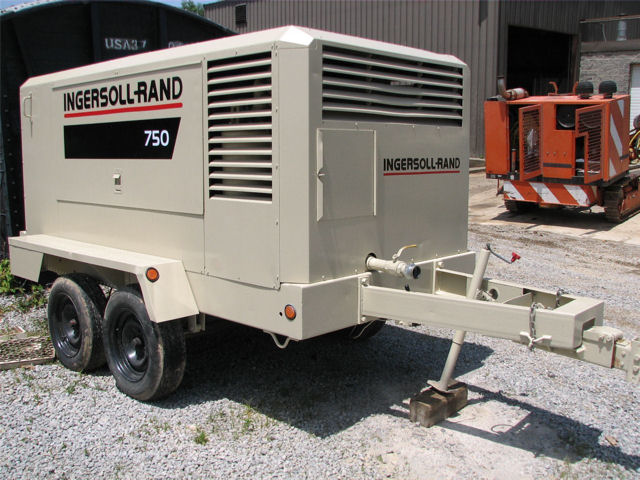
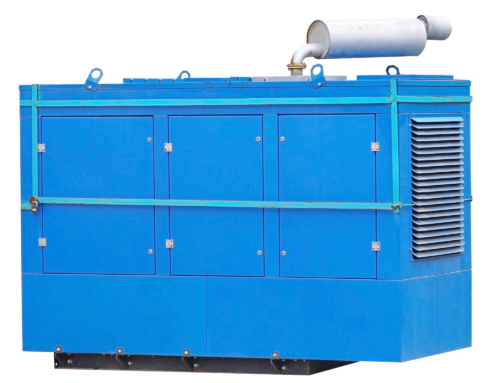
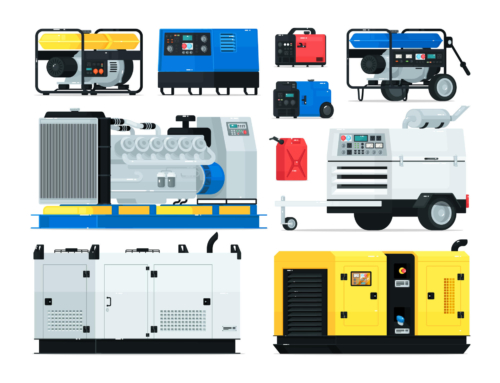
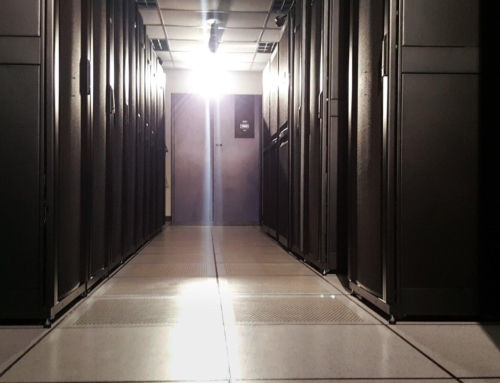
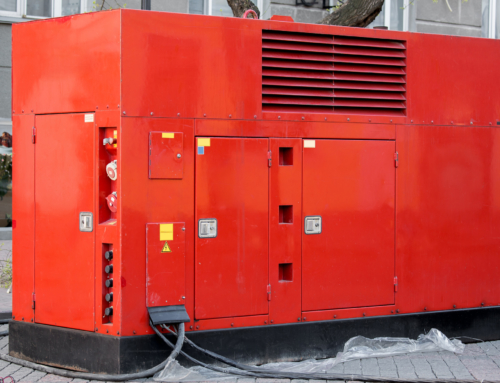
Leave A Comment